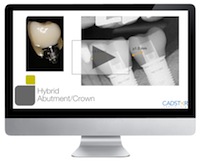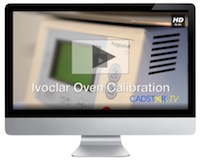Submitted by James Klim DDS, CADStar host on 02/09/2014 - 2:08pm
Submitted by James Klim DDS, CADStar host on 02/03/2014 - 12:06pm
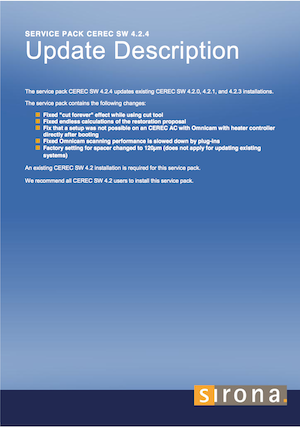
CEREC SW 4.2.4 is ready for download at sirona.com. Servicer Pack Link at sirona
Submitted by James Klim DDS, CADStar host on 11/24/2013 - 7:34pm
Submitted by James Klim DDS, CADStar host on 10/08/2013 - 8:49pm
Submitted by James Klim DDS, CADStar host on 06/15/2013 - 10:53pm
This video is the introduction to the James Klim DDS CEREC Meisinger Lab Kit (JK03). The combo of shaping diamonds and wheels and diamond polishers are designed for efficient ceramic finishing. This kit is what I use for finishing my CEREC restorations in my clinical dental theater and hands-on teaching classes at the CADStar CEREC Training Center in Santa Rosa,
Submitted by James Klim DDS, CADStar host on 04/29/2013 - 10:43pm
Full training for e.max abutment and bridge applications will be coming soon right here on cadstar.tv online CEREC training and in our applicable classes at the CADStar CEREC Training Center. Keep an eye open for our soon debuting class this summer...CEREC e.max Implant and Bridge Applications.
Submitted by James Klim DDS, CADStar host on 03/26/2013 - 10:55pm
This video is the introduction to the Klim CEREC Meisinger Lab Kit (JK03). The combo of shaping diamonds and wheels and diamond polishers are designed for efficient ceramic finishing. This kit is what Dr. James Klim uses in his clinical dental theater and teaching classes.
Submitted by James Klim DDS, CADStar host on 03/13/2013 - 10:19pm
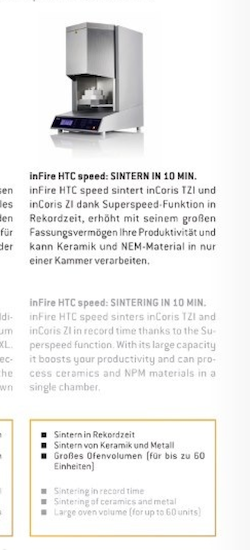
I have been working with inCoris zirconium crowns, abutments, and bridges using the Ivoclar 90 minute rapid firing oven. The Sirona inFire HTC has a record time of 10 minutes. This opens new options for chairside InCoris ITS restorative protocols. I will soon be posting videos with these applications.
Submitted by James Klim DDS, CADStar host on 03/13/2013 - 10:12am
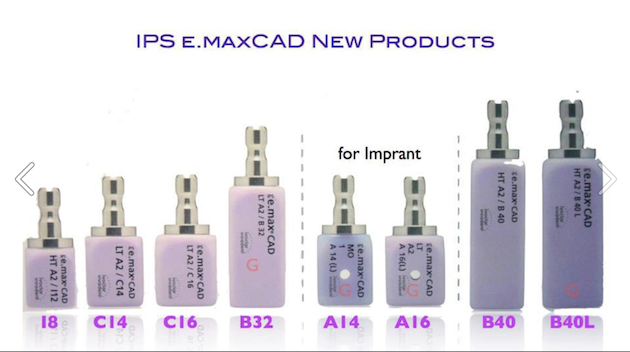 Ivoclar will be adding several new milling blocks...C16 for the extra large restoration, the B32 for the all e.max anterior bridge, and what I am drooling for, the implant abutment blocks. WOW. The future is so bright. I have been informed they will be available in the US once they clear the FDA. High probability sometime this year.
Ivoclar will be adding several new milling blocks...C16 for the extra large restoration, the B32 for the all e.max anterior bridge, and what I am drooling for, the implant abutment blocks. WOW. The future is so bright. I have been informed they will be available in the US once they clear the FDA. High probability sometime this year.
Submitted by James Klim DDS, CADStar host on 02/25/2013 - 10:19pm
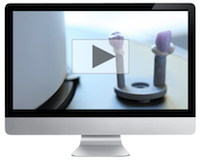 Ivoclar has recommended using the spray glaze for the 14 minute crystallization cycle to avoid glaze bubbling. I have now processed several hundred brush-on glazed restorations without bubbling as well. This video will review my technique to master the brush-on glaze application technique for both the traditional cycle
Ivoclar has recommended using the spray glaze for the 14 minute crystallization cycle to avoid glaze bubbling. I have now processed several hundred brush-on glazed restorations without bubbling as well. This video will review my technique to master the brush-on glaze application technique for both the traditional cycle

